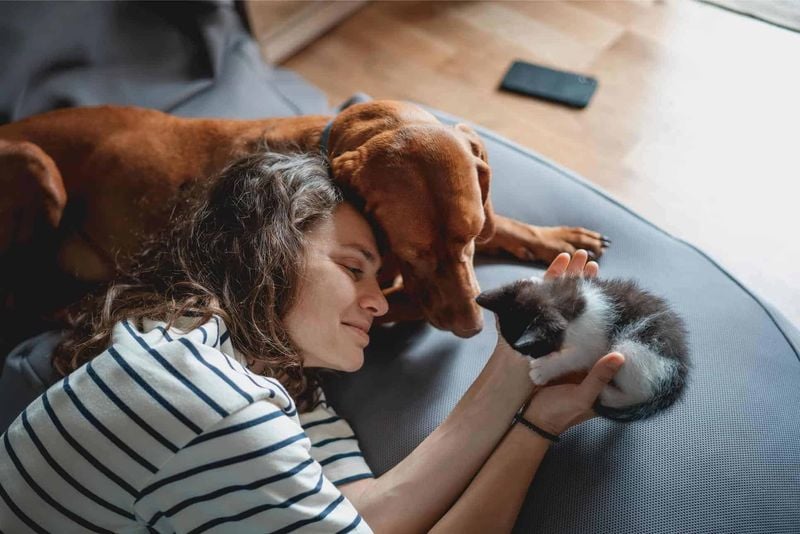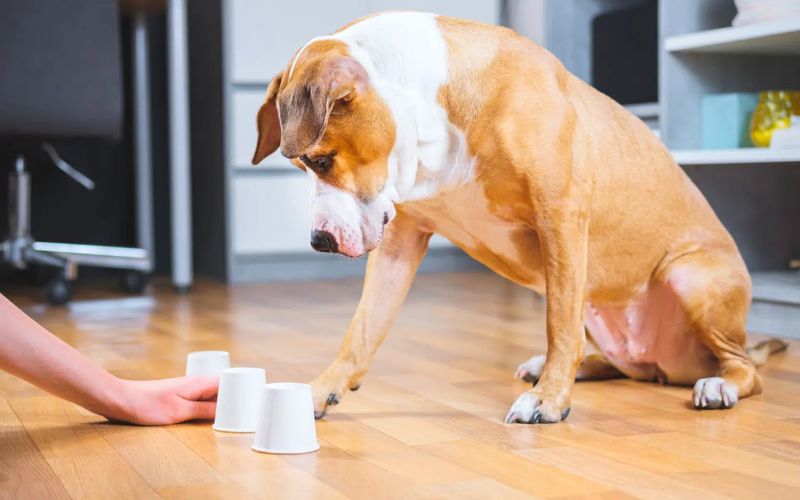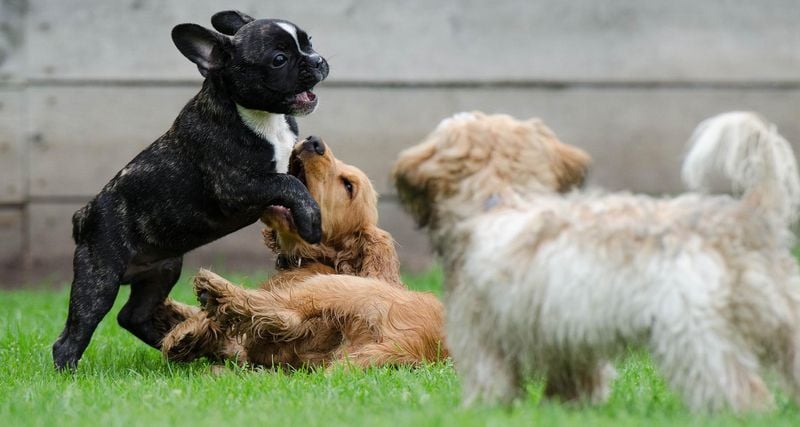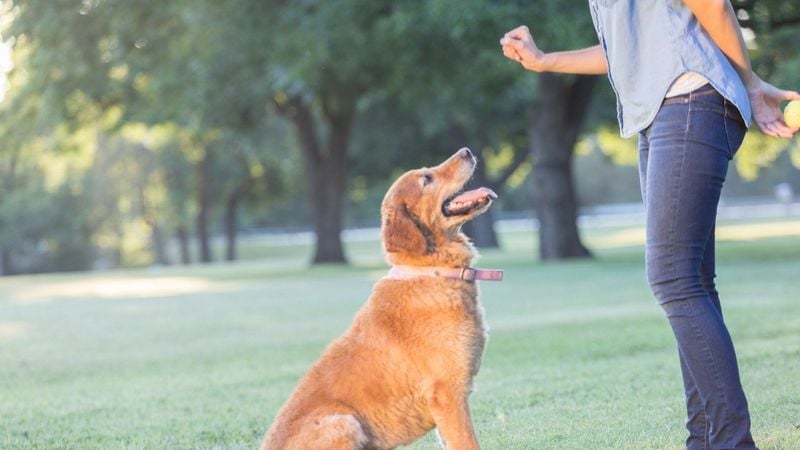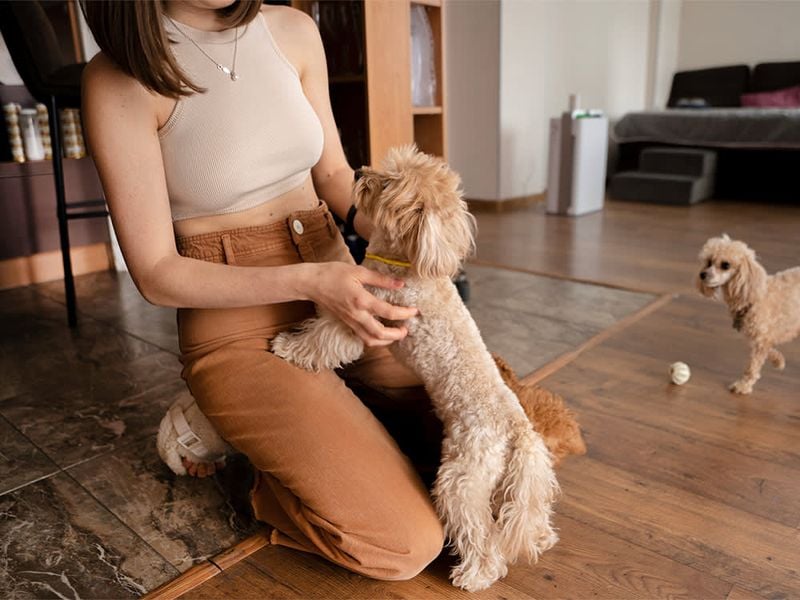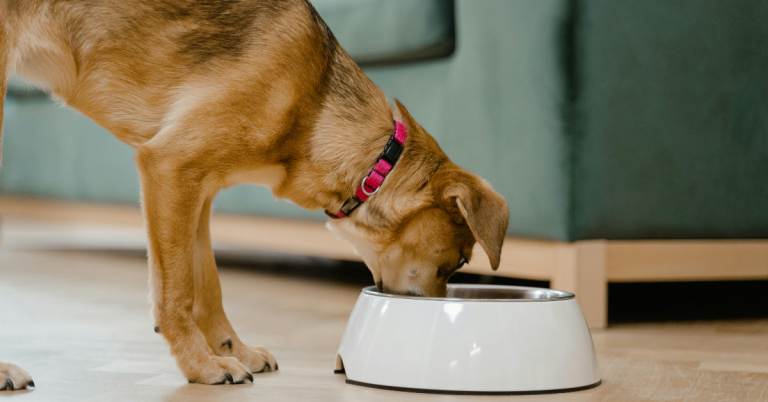13 Signs Your Dog Is Truly Happy (And How to Keep It That Way!)
Dogs bring boundless joy to our lives, but how can we tell if they’re truly happy? While wagging tails and wet-nosed kisses are obvious indicators, canine happiness runs deeper than surface-level excitement. Our four-legged companions express emotional well-being through a variety of behaviors—some subtle, others unmistakable—that reveal just how content they really are.
Understanding your furry friend’s emotional state isn’t just heartwarming—it’s a key part of responsible pet ownership. Recognizing the signs of a happy dog helps you meet their physical, emotional, and social needs more effectively. It also strengthens the special bond you share, creating a foundation of trust, love, and mutual understanding.
Whether you’re a new dog owner or a seasoned pup parent, learning how to interpret these cues empowers you to enrich your dog’s life—and yours in the process. From relaxed body language to joyful playfulness, here are 13 signs that your dog is happy, healthy, and thriving.
1. Relaxed Body Language Speaks Volumes
A happy dog’s body tells the whole story without saying a word. Look for loose shoulders, a softly wagging tail held at medium height, and a mouth slightly open with a relaxed tongue—possibly even forming what looks like a doggy smile.
When content, your pup’s ears will sit in their natural position, not pinned back or rigidly forward. Their eyes will appear soft, sometimes blinking slowly, without the wide-eyed alert stare of anxiety.
Maintaining this relaxed state means creating a stress-free environment with predictable routines and plenty of safe spaces where your dog can retreat when needed.
2. Hearty Appetite Shows Contentment
When dogs eagerly approach mealtime with enthusiasm, it’s a powerful indicator of their overall happiness. Healthy dogs typically maintain consistent eating patterns, showing interest in food and treating mealtimes as positive experiences rather than stressful ones.
Sudden changes in appetite often signal health issues or emotional distress. To maintain this joy of eating, establish regular feeding schedules and use appropriate portion sizes based on your dog’s age, size, and activity level.
Consider making mealtimes mentally stimulating with puzzle feeders or training exercises that incorporate treats, creating positive associations that keep your pup looking forward to every bite.
3. Playful Bouncing Reveals Inner Joy
Nothing screams canine happiness quite like spontaneous play sessions! The play bow—front legs extended, rear end up, tail wagging—is your dog’s universal invitation to fun.
This natural behavior shows they feel secure enough to let their guard down completely. Happy dogs initiate play with toys, other pets, or you, often accompanied by those adorable little play-growls or excited barks.
They’ll bound around with infectious energy that seems to come from nowhere. Nurture this joyful spirit by rotating toys to keep things interesting, scheduling regular play dates with compatible dog friends, and dedicating at least 15-30 minutes daily to active play with your furry friend.
4. Peaceful Sleep Patterns Signal Trust
A contented canine sleeps soundly without constantly startling awake. Watch for relaxed sleeping positions—particularly the vulnerable belly-up pose that demonstrates complete trust in their environment and in you.
Happy dogs typically follow healthy sleep cycles, getting 12-14 hours daily for adult dogs (more for puppies and seniors). They’ll drift off easily in your presence and may even seek out your company for napping.
Support quality sleep by providing multiple comfortable resting spots throughout your home. Include a designated bed in quiet areas away from household traffic, and maintain consistent sleeping schedules that align with your family’s routine.
5. Affectionate Behavior Creates Bonds
Happy dogs actively seek physical connection with their favorite humans. They might lean against your legs during conversations, place a paw on your arm for attention, or nestle their head in your lap while you’re relaxing.
These furry companions often follow you from room to room—not from anxiety, but from genuine desire to be near you. The classic full-body wiggle when you return home speaks volumes about their attachment.
Foster this beautiful bond by responding positively to their affection. Set aside dedicated cuddle time daily, learn your dog’s preferred petting spots (most love chest scratches and gentle ear rubs), and speak to them in that special voice reserved just for them.
6. Tail Language Reveals Emotional State
A truly happy dog’s tail tells a specific story—it’s not just about wagging! The ideal happy wag involves the tail at medium height (not tucked or rigidly upright) moving in a relaxed, sweeping motion that often involves the whole rear end.
The speed matters too. Gentle, wide wags typically signal contentment, while rapid, short wags might indicate excitement or even nervousness. Many happy dogs display the delightful “helicopter tail”—that circular motion that seems physically impossible!
Understand your specific breed’s tail language, as natural tail positions vary widely. Spitz-type dogs like Huskies naturally carry tails high, while Greyhounds typically hold theirs lower even when happy.
7. Curious Exploration Shows Confidence
Happy dogs approach the world with open-minded curiosity rather than fear. During walks, they’ll investigate new scents with relaxed body language, moving forward with confidence rather than hesitation.
These secure pups show interest in novel objects or environments without excessive startle responses. They’ll use their remarkable noses to gather information, often alternating between exploration and checking in with you for reassurance.
Encourage this healthy curiosity by allowing “sniffari” walks where your dog sets the pace and direction sometimes. Introduce new toys, puzzles, and safe environments regularly.
Remember that mental stimulation through exploration is just as important as physical exercise for overall happiness.
8. Social Butterfly Behavior With Others
Well-adjusted, happy dogs generally enjoy appropriate social interactions with both humans and fellow canines. They greet familiar people with enthusiasm—tails wagging, bodies wiggling, sometimes even bringing toys as gifts.
With other dogs, they display good manners: proper greetings with curved approaches rather than head-on confrontations, play bows to signal friendly intentions, and respectful responses to communication signals from their playmates.
They know when to amp up play and when to back off. Support these social skills through positive, controlled introductions to new friends.
Reward calm greetings rather than jumping, arrange regular playdates with compatible dogs, and respect your dog’s individual social preferences and limits.
9. Balanced Barking Communicates Needs
Contrary to popular belief, happy dogs do bark—they just do it appropriately! Contented canines use vocalizations purposefully: to alert you to visitors, express excitement during play, or communicate specific needs.
The quality matters more than quantity. Happy barks sound different from anxious ones—they’re usually shorter, more melodic, and often accompanied by playful body language rather than rigid posturing.
Some breeds naturally “talk” more than others. Maintain this healthy communication by responding consistently to legitimate alerts while not reinforcing excessive barking.
Teach a “quiet” command paired with positive reinforcement, ensure sufficient exercise to prevent boredom barking, and recognize that occasional barking is normal dog behavior.
10. Glowing Coat Reflects Inner Health
A dog’s coat often mirrors their overall wellbeing. Happy, healthy dogs typically sport shiny, smooth fur without excessive dander, bald spots, or greasy patches. The skin underneath should be clean and free from redness or irritation.
Even breeds with naturally rough or wiry coats should have a certain vitality to their fur. Regular self-grooming behavior—like appropriate licking and cleaning—indicates your dog feels good in their own skin.
Maintain this outer glow through proper nutrition rich in essential fatty acids, regular brushing appropriate for your dog’s coat type, and scheduled professional grooming as needed. Address any sudden coat changes promptly with your veterinarian, as they often signal health issues.
11. Regular Bathroom Habits Show Comfort
While not the most glamorous topic, consistent bathroom habits reveal volumes about your dog’s physical and emotional state. Happy dogs maintain regular, predictable elimination patterns without frequent accidents or apparent discomfort.
They’ll typically choose appropriate spots, seem relaxed during the process, and may even have a little post-bathroom celebration (the famous “poop zoomies” that many dog parents recognize).
This comfort with such a vulnerable activity shows they feel secure in their environment.
Support healthy elimination by maintaining consistent feeding schedules, providing ample opportunities for bathroom breaks, praising appropriate outdoor elimination, and watching for any changes in habits that might indicate health issues requiring veterinary attention.
12. Eager Training Participation Builds Confidence
Happy dogs approach learning opportunities with enthusiasm rather than fear or reluctance. They eagerly engage in training sessions, showing bright eyes and attentive body language when you bring out the treats and clicker.
These willing students offer behaviors readily, bounce back quickly from mistakes without shutting down, and visibly enjoy the mental challenge. The joy comes not just from treats but from the satisfaction of solving puzzles and connecting with you.
Foster this love of learning by using positive reinforcement techniques exclusively. Keep sessions short (5-10 minutes) but frequent, end on successful notes, and incorporate training into daily life rather than making it a separate, formal activity.
13. Balanced Response To Routine And Novelty
Truly content dogs strike a perfect balance between appreciating consistent routines and embracing new adventures. They find security in predictable meal times, walks, and sleep schedules, showing relaxed anticipation of these daily rhythms.
Simultaneously, these well-adjusted pups approach novel experiences—like visiting new places or meeting new people—with curious enthusiasm rather than fear. They recover quickly from mild stressors and use your reactions as guidance for unfamiliar situations.
Nurture this balanced outlook by maintaining consistent daily schedules while gradually introducing new experiences in positive ways. Start with brief, happy exposures to novelty, pair new experiences with favorite treats or toys, and always provide a secure home base to return to.





